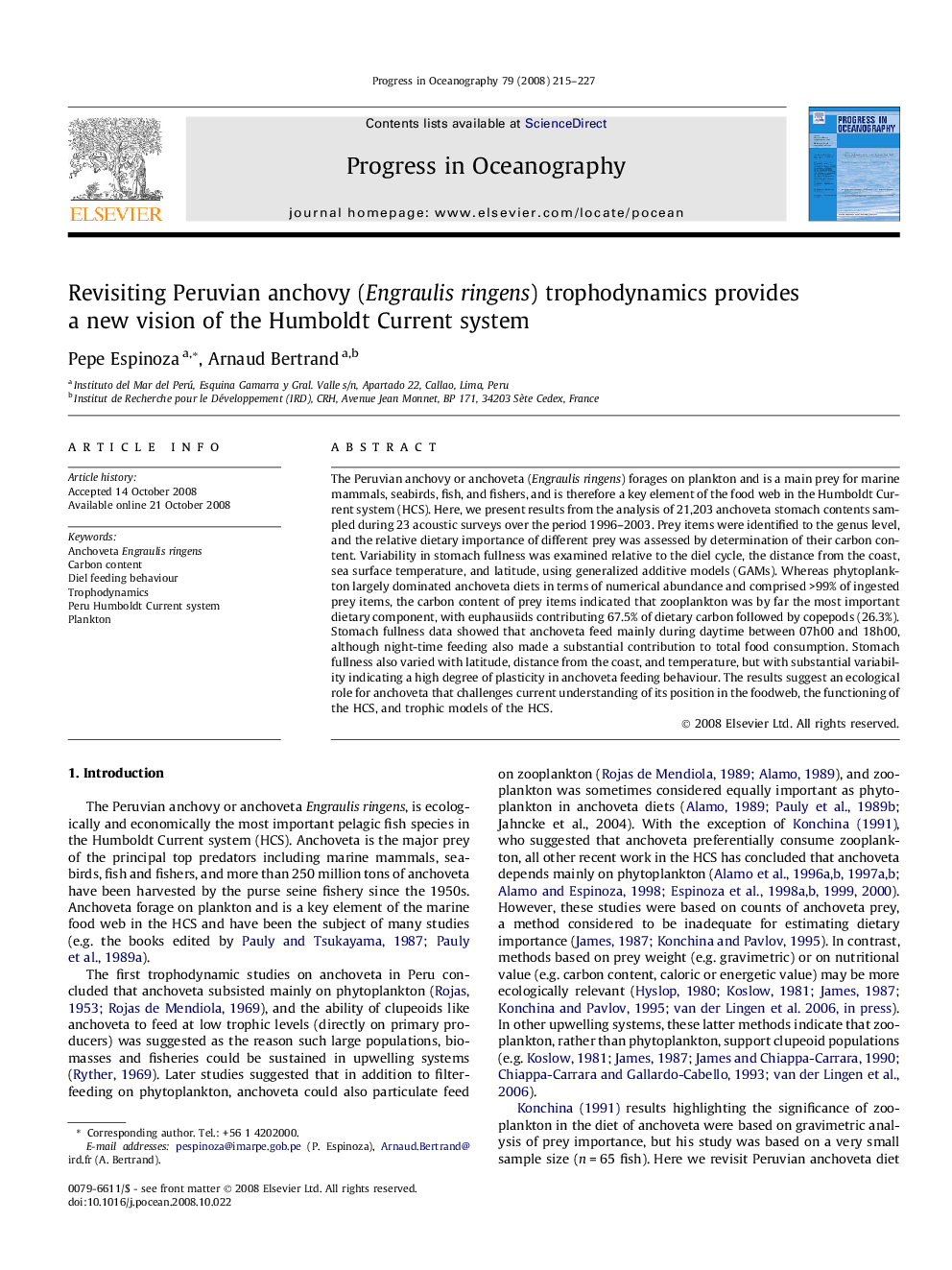| Article ID | Journal | Published Year | Pages | File Type |
|---|---|---|---|---|
| 4553634 | Progress in Oceanography | 2008 | 13 Pages |
The Peruvian anchovy or anchoveta (Engraulis ringens) forages on plankton and is a main prey for marine mammals, seabirds, fish, and fishers, and is therefore a key element of the food web in the Humboldt Current system (HCS). Here, we present results from the analysis of 21,203 anchoveta stomach contents sampled during 23 acoustic surveys over the period 1996–2003. Prey items were identified to the genus level, and the relative dietary importance of different prey was assessed by determination of their carbon content. Variability in stomach fullness was examined relative to the diel cycle, the distance from the coast, sea surface temperature, and latitude, using generalized additive models (GAMs). Whereas phytoplankton largely dominated anchoveta diets in terms of numerical abundance and comprised >99% of ingested prey items, the carbon content of prey items indicated that zooplankton was by far the most important dietary component, with euphausiids contributing 67.5% of dietary carbon followed by copepods (26.3%). Stomach fullness data showed that anchoveta feed mainly during daytime between 07h00 and 18h00, although night-time feeding also made a substantial contribution to total food consumption. Stomach fullness also varied with latitude, distance from the coast, and temperature, but with substantial variability indicating a high degree of plasticity in anchoveta feeding behaviour. The results suggest an ecological role for anchoveta that challenges current understanding of its position in the foodweb, the functioning of the HCS, and trophic models of the HCS.
